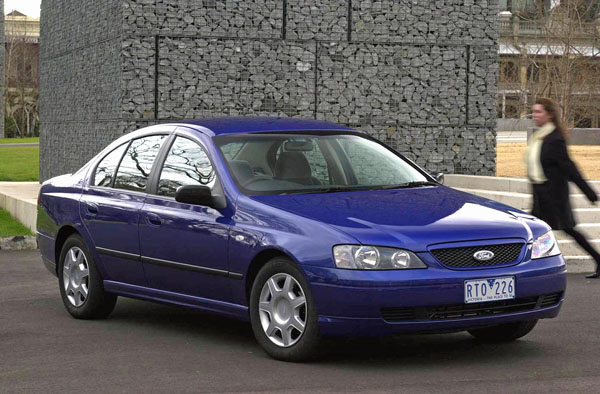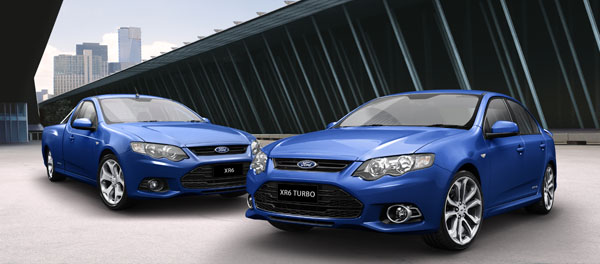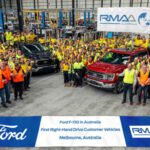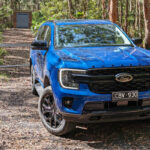In October 2016 the last Ford Falcon left the assembly line, not long after its 56th birthday in Australia.
Used Falcons have long been favourites on the secondhand scene, especially with those living in the great Aussie bush. They are ruggedly built, seem to last forever if driven and serviced correctly, and soak up rough and ready backroads.
Handling of the Falcon is surprisingly sharp for its size and they hold on when cornering at speeds much higher than is likely to be attempted by most owners.
Ford Falcons have seating for five adults, but four makes more sense because the transmission tunnel takes up a lot of footroom in the centre-rear position.
The sedan’s boot is relatively shallow as it has a differential under it, but it’s easy to load thanks to a good-sized opening. From the BA Falcon model onwards things are better, though the boot’s still on the shallow side. Station wagons are spacious.
You may also like to consider the Ford Territory SUV as it shares quite a few Falcon components under the skin. It has a good load area and being a virtually all Aussie design it works well here
Ford’s six-cylinder engines in this period all have a capacity of 4.0 litres. Though based on previous sixes they had many improvements that give them added grunt whilst using less fuel.
The six comes in multiple formats, including turbo-petrol units. An interesting variant on the six-cylinder is a dedicated LPG engine. It’s significantly thirstier than the petrol so fuel range suffers. Many taxis used the LPG unit although it’s not that common in private cars (except in Victoria). The factory built editions of this engine are all but indistinguishable from a petrol unit to drive.
The V8 engine from the BA Falcon onwards, had a capacity of 5.4 litres, later reverting to 5.0 litres. The 5.0 has significantly more technology, provides plenty of grunt, and sounds good.
A supercharged Boss V8 was introduced in the XR8 late in 2014, a brilliant powerplant that will be missed by those who love the sound and fury of a bent-eight.
An interesting model is the four-cylinder Falcon – yes four-cylinders! This EcoBoost Falcon followed has a turbocharged four. It has strong performance and nimble handling, the latter due to the lighter weight of the engine. However, the Falcon EcoBoost didn’t have the sales success it deserved and you may be able to pick up a real bargain on the used-car scene.
Four-speed automatic transmissions were gradually phased out and replaced by far better six-speed units, starting in 2004 with the upmarket models and gradually making their way into the rest of the range.
The dedicated LPG models had a four-speed auto until the introduction of the FG Falcon series in 2011.
Manual gearboxes are rare and probably best avoided in all but the sporting models as they can affect resale value. The manual was a five-speed until the BF series, when a six-speed was installed.
Prices for spare parts, servicing and repairs are very reasonable. There are Ford dealers just about everywhere in Australia.
Most spare parts for the Falcons covered here are still available, however a few bits on older cars may have to come from a recycler. Perhaps check on this as part of your research into which Falcon to buy.
These big Fords are relatively simple to work on, with plenty of underbonnet and undercar space. Having a workshop manual makes a lot of sense if you’re doing work for the first time.
Insurance prices are generally reasonable and premiums for the everyday models are almost invariably at the lower end of the scale.
Premiums depend not only on the Falcon model but also on drivers’ age, experience and claims history. Shop around, but make sure you understand what you are, and perhaps not, getting.
It will sometimes cost more to cover a V8 Falcon especially for young and/or inexperienced drivers.
WHAT TO LOOK FOR
Check the cabin for damage caused by bored kids. In station wagons have a good look at the load area for signs of commercial use.
Many thousands of used Falcons will have been taxis at some time in their life. Be wary of one running on dedicated LPG; while these are quite common in Victoria, they are rare anywhere else in Australia.
Signs of an ex-taxi are vinyl trim, rather than cloth or leather, severe wear both inside and out, holes where signs and a taximeter have been removed, and possibly a paint respray.
Engine wear is indicated by a reluctance to start and smoke from the exhaust and/or the oil filler cap when the engine is revved after it has been idling for more than about a minute.
Gear changes in the automatic should be fast and clean and shouldn’t hunt up and down unnecessarily through the ratios.
Be suspicious of an auto that’s slow at going into gear from Neutral or Park.
Manuals should shift smoothly, if the ‘box is getting on in years or has been driven hard it may crunch on fast three-two downchanges.
Rust is all but unknown in the newer Falcons being reviewed here, if you do find any it’s likely the car has been crashed and poorly repaired.
HOW MUCH?
Expect to pay from $5000 to $9000 for a 2007 XR8; $7000 to $12,000 for a 2010 G6 Turbo; $9000 to $14,000 for a 2011 XR6T; $12,000 to $18,000 for a 2012 XR6T; $13,000 to $19,000 for a 2016 Ecoboost; $14,000 to $20,000 for a 2013 G6 E; $22,000 to $31,000 for a 2014 XR8; and $34,000 to $47,000 for a 2016 XR8 Sprint.
CAR BUYING TIP
Buying an ex-taxi? They can be well priced and if driven by an owner-driver and serviced by the book can be surprisingly good.
RECALLS: To browse recalls on all vehicles go to the ACCC at: www.productsafety.gov.au/products/transport/cars/














